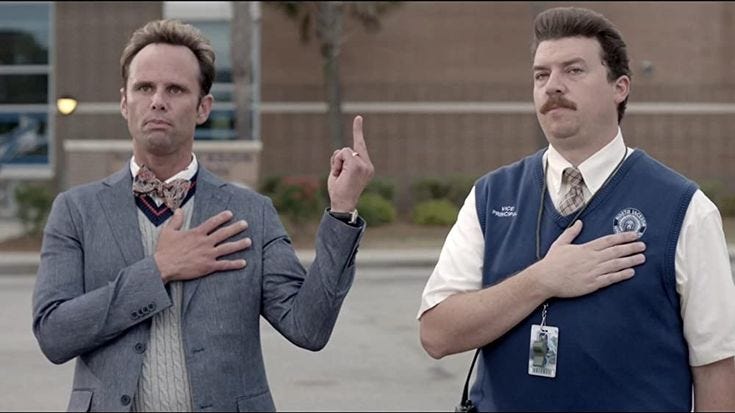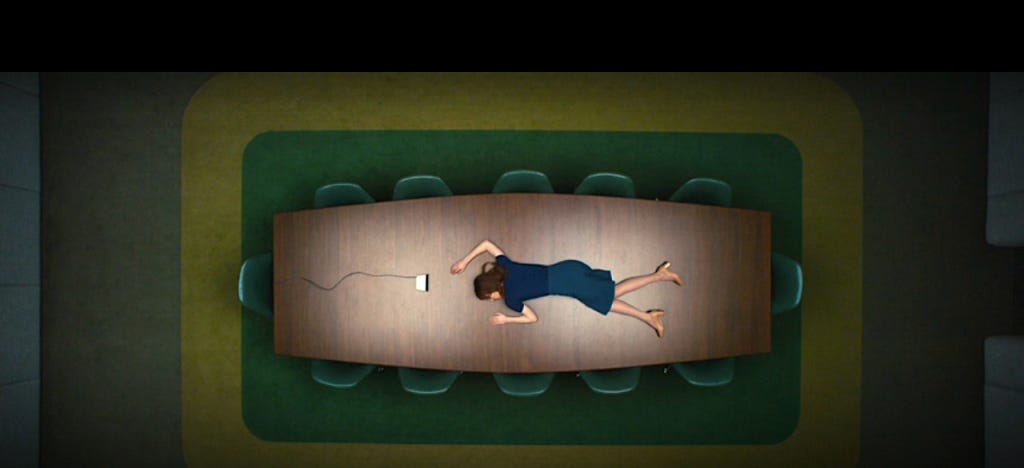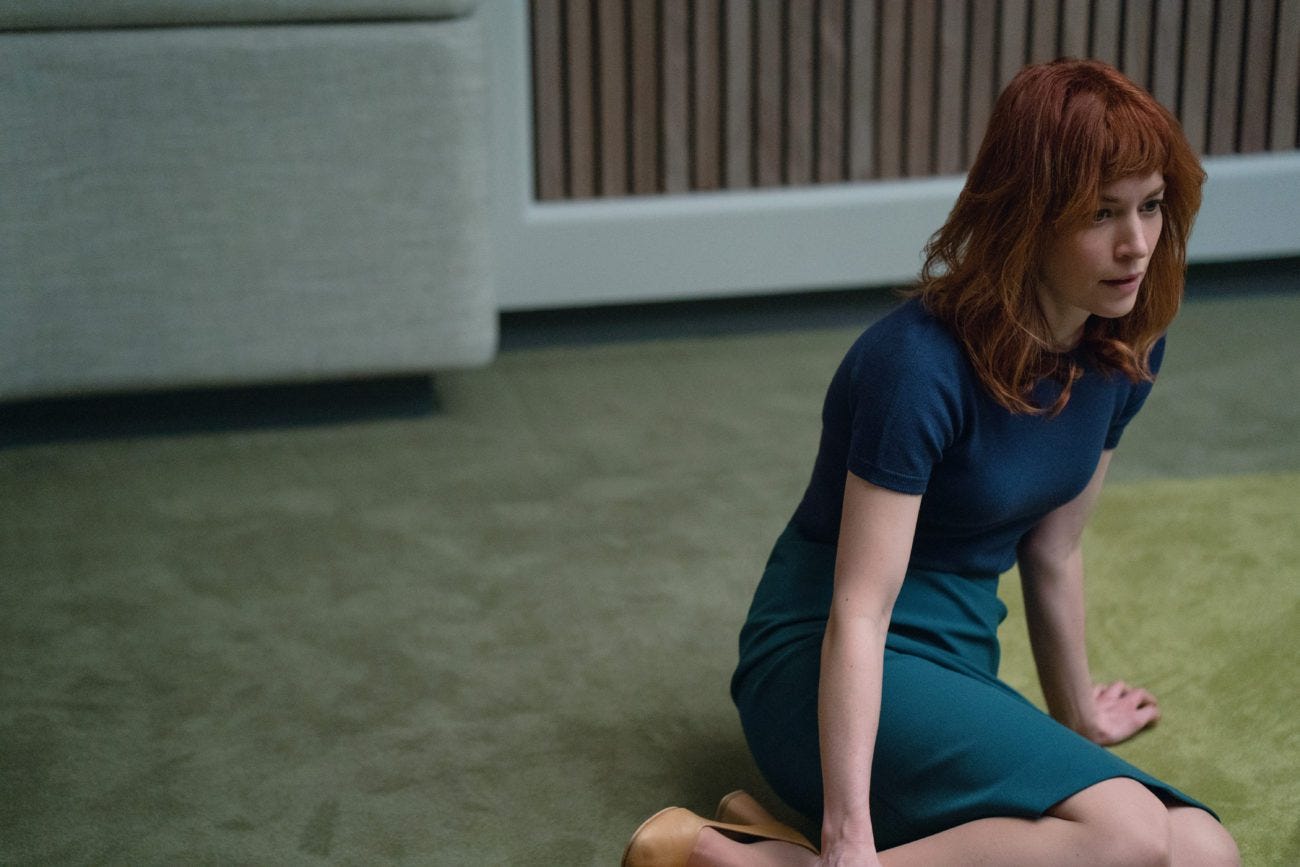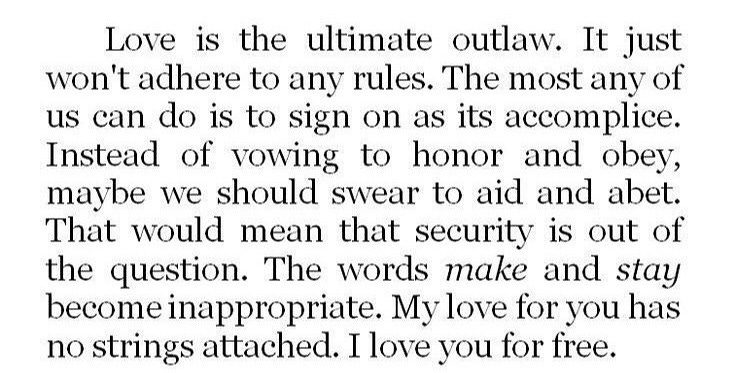How to Outperform "Second Screen" Content & Find Your Audience
The Artist-Project-Audience Tripod Theory, audience brilliance, & why your work is a group project
The question isn’t “where do I find my audience?”
The question is when.
When is the moment someone reads your words, or watches your film, or otherwise ingests your Interior Life Made Plain By Art, and decides they’re all in?
When is the moment they divest from second screen content1, put their phone on a ceaseless Do Not Disturb, and sign over the rights to their inbox in exchange for your cinematic universe?
Stop asking where you can hunt them down, and start asking yourself “at what point in my work does someone lock in?”
Lots of folks ask where to find an audience, but ask yourself, for real, would you know what to do with them once you found them?
How would you make them stay with you?
How would you capture their attention?
We’ll get back to those questions in a bit, but first, let’s consider what exactly an audience is.
The Artist-Project-Audience Tripod Theory
Art is a three-legged tripod. There’s the artist (you), the project (what you make), and the audience (the people who respond to the project). Without one of those parts, the tripod collapses into a couple of awkward sticks.
An artist + project is a hermetic practice.
An artist + audience is a parasocial relationship.
A project + audience is a commercial.
It’s only when all three parts come to the table equally that we get something we can confidently call art.
You, the artist, begin. You have an impulse to write a character based on your cryptic neighbor, who says things like “Mmmm yes. Saw you on my camera. That coyote almost got ya…” You have an instinct they might make a good anti-hero. You work the beginnings of things. You follow the scent.
The project, what you make, is an offer. It’s a flare you send out. It’s the container for your beginnings. It holds something in it and we’re not always sure what it is. As artists, we simply begin and, eventually, trudge toward the end as we fill the container with various combinations of ephemera until it all feels right.
The audience responds to the offer. They determine it’s full breadth by how they respond. If you’re doing very good work as the artist, you’re offering a project that unlocks something dormant in your audience. Not as a teachable moment, but as a kindness. What you’re really saying is “Isn’t that just the way it is?” And the audience — if what you’ve made rings true — will respond, “Sure is.”

Don’t Get Sidetracked By Marketing to Your Audience
I will briefly digress to tell you this:
I’ve made day job money for over 13 years from developing marketing plans, using my copywriting skills to deploy those plans, and strategizing brand universes for startups and celebrities.
And it’s from that experience that I now tell you this:
Make the art first. Market it second.
You’re going to do both because, well, we all have to do both. That’s the 21st century of it all. But you don’t want to do both at the same time.
And, to further complicate things, if you don’t put all your eggs into your Art Basket, walk it home from the market, and place them in the fridge right away before taking the dog out, then no amount of marketing is going to keep those eggs from rotting.
What I mean is — the marketing can only amplify what’s already there.
So if you’re skipping the rigor of your artistic practice, no amount of marketing will build an audience who sticks around.
Why do I digress for those 160 words? Because I truly understand the impulse to want to grow an audience and fast! To do the tricks and the tips and the strategizing and the methods and the funnels and all that.
But if you haven’t first done the bone-rattling, Deep Work of making art that rings true, then it’s a little like being an elementary school vice principal and skipping ahead of the second graders in the lunch line.
You can do it, but should you?

How to Create Second-Screen-Defying, Attention-Worthy Moments for Your Audience So They’ll Love You Forever
Back to the Artist-Project-Audience Tripod Theory. The beauty of thinking about your work as a group project done with your audience is you start to consider them as you edit.2
And as you do, you find these little moments in which to invite your audience to linger in the story, and perhaps, if all goes well, fall in love with it. These moments don’t just add up, they compound. That’s the moment a multi-screen tab-toggler becomes a devoted superfan.
That’s when you find your audience.
It’s easier to explain with an example.
I now submit into evidence the opening scene of Severance, S1E1: Good News About Hell.
1. Specific contradictions
The opening image of the entire series is a woman, dressed in office attire, laying on a conference table. The key detail being she is — on — a conference table.
If we opened on her sitting in a chair at the conference table, or standing at the head of it, or entering the conference room, we wouldn’t think much of it. She and the room go together. They’re both dressed in block colors. But there’s one tiny little thing: she’s on top of the table. This doesn’t fit. It contradicts everything we know about how to behave in a conference room.
The very specific contradiction of a well-dressed woman alone on top of a conference table is an invitation to us, the audience. It’s asking us to consider every single detail. It encourages us to lean in. It’s a wink.
And we, the audience, love a subtle wink. It’s easy to fall in love with a wink. Specific contradictions do that.
2. Necessary, incomplete answers
While the woman flexes and points her way out of prone position, we hear a voiceover saying “Who are you?”
Is the voice from a radio? Is she wearing headphones? Is it a voiceover from a different point in time? A flashback? Does she hear it? Is that what wakes her up? Does she recognize the voice? Where is it coming from?
We have lots of questions, and the writer, Dan Erickson, and director, Ben Stiller, choose to answer the only necessary one: where is the voice coming from?
We cut to a close up of the loudspeaker, also on the conference table. We still don’t know who’s speaking, if she knows who’s speaking, if this is funny or upsetting, or what she’s going to be asked to do, but we do know this: the voice is coming from the loudspeaker.
This gives us, the audience, a little bit more trust in the storytellers. We have a question, they answer it. They don’t answer every little thing, but they give us something, which tells us we’re in good hands.
It makes us lean in a little more.
3. Disregard full disclosure
There’s nothing extra in this scene.
We have no set up. We have no establishing wide shot of the building containing this conference room. We have the only information we need: woman in conference room. She’s passed out, maybe?, on the table. And there’s a voice coming from a loudspeaker. There seems to be some planning and purpose to this. She doesn’t seem to be hungover. She seems to have been put there.
If we all of a sudden started getting shots of the hallways, shots of the building, shots of the town, then we, the audience, would assume all of those data points are equal to the situation of the woman on the table talking to a loudspeaker. Our attention might be brought to the time of day, or the name on the building, or who else is in the hallway.
But right now, the only thing we care about is that woman and that loudspeaker. And perhaps the doors. We do find ourselves wondering about any doors and if they open.
If you disregard full disclosure — how she got here, why she’s here, and what this building even is — then the audience gets to stay suspended in the emotional stakes of it. We don’t intellectualize. We stay present.
When the set up is this good, nothing would be more excruciating than distracting us by describing how we got here.
4. Exhaust, then escalate
Now we’re really in it, and this woman is, too.
The look of confusion on her face and the fact that she dismounts the table onto Bambi legs suggests to us something’s probably up! So at this point, as the audience, we have enough info to know she should probably leave the room. If the storytellers respect us, they’ll now make her go for the doors.
And for the doors, she doth go. She circles the room, looking for exits, finding one singular door and pulling on it with her full bodyweight.
The storytellers must exhaust the options. They set up this great room, they can’t take her out of it yet. But they also have to earn it. They can’t keep her there without a fight.
It’s only when she exhausts the door option, and can’t find a way out, that she chooses another way out — talking to the voice in the loudspeaker.
It’s an exhaustion of possibilities that leads to an escalation of the stakes. It’s the option she didn’t want, and now has to take.
When we put our characters in a corner, and make them fight their way out, we, the audience, will make their emotional stakes our own.

You Have to Say ‘I Love You’ First
All of this to say: your audience is smart. Brilliant, in fact. You can’t pretend to have respect for them. You have to really have it and then rigorously show it.
And it’s in those moments of believing in the brilliance of your audience and rising to their level when they might fall in love with your story.
Earlier I asked you a few questions:
You may be wondering where to find your audience, but ask yourself for real, would you know what to do with them once you find them?
How would you make them stay?
How would you capture their attention?
Trick questions.
Those are, indeed, questions that marketers will ask about marketing. But they are not the questions artists can ask about storytelling.
You cannot make the audience stay. You cannot “capture” our attention. Your project is an exchange between equals. You fulfill a role — artist. We fulfill ours — audience. And both are equal in stature and responsibility.
It’s a thing quite like love. To offer someone something of yourself and wait to see if it lands, that’s a risky thing.
So when do you find your audience? It happens the moment they accept your offer and offer something back to you. You ask them to lean in, and then they do. You give them a little more info, and they stay with you. You ask them to play, and they say yes.
It’s a delightful little dance.
Don’t fret too much about where your audience is. They’re everywhere.
They’re the attendant at the bookstore you pop into when you’re early for dinner across the way.
They’re your kid’s best friend’s babysitter with whom you reliably chit chat on Tuesdays/Thursdays at school pickup.
They’re a random online acquaintance from 2011 internet days.
Or college friends you’ve long since fallen out of touch with.
And also your second cousin on your mom’s side who you only see at funerals and weddings.
Those people are your audience. And there’s no one place to find them.
It’s rigorous work to love someone.
But if you try, you’ll soon have something better than any marketing: you’ll love each other for free.
This is the fourth post in a series considering the concept of rigorous thinking and how independent artists can leverage it to gain more power.
Rigorous Thinking Series:
The Revolutionary Rigor of Working Class Independent Artists
How to Outperform "Second Screen" Content & Find Your Audience
The Free Thinking, Coalition Building, Truth Insisting, 21st-Century Artist
Tell me in the comments: What do you LOVE to see as an audience member?
Besides making movies and writing, I help other folks with writing and indie infrastructure.
Tell me what you’re working on and let’s hop on a short development call. (FREE)
Get The Writing Process Stack to resurrect your Untitled stream of consciousness drafts from your Trash folder and start using your forte voce.
Take the Artist Timeline Quiz, which is honestly just a lot of fun. Folks often take it multiple times as a sort of quarterly calibration. (FREE)
A new Hollywood note: “This isn’t second screen enough.” Meaning, the film or TV series isn’t simplistic enough to indiscriminately stream in the background while the audience is watching something on their phone (the first screen). More here: Streamers Want You to Dumb Down Your Film and TV Ideas
Not suggesting AT ALL to consider anything other than your gut when first getting things down on paper. In fact, I might even save my first edit for me, myself, and I — to really figure out what I’m saying. But eventually, eventualllllyyy, as things evolve, you’re going to need to ask yourself the questions: Does this make sense? Am I giving too much? Too little? What will this edit or that edit do to my audience’s experience of the story?







This breakdown was both analytical and poetic. This part, in particular, stood out to me: "You cannot make the audience stay. You cannot “capture” our attention. Your project is an exchange between equals. You fulfill a role — artist. We fulfill ours — audience. And both are equal in stature and responsibility." Gold.
This was great. It’s been so long since I saw the first episode of severance but you’re right about how that image started the engagement (pardon the cliched word) … made me curious and frankly made me trust the filmmakers to stay with the confusion and uncertainty. It seemed someone knew where it was going … and that was all I needed for a long time.